Green Inflections: A Manual for Inside Plants
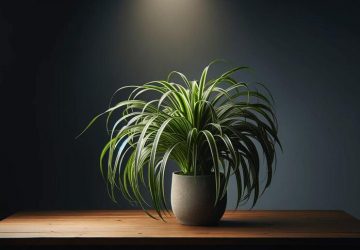
Houseplants and office plants are something other than improving components; they bring life, variety, and a hint of nature inside. These plants can upgrade the tasteful allure of a space, further develop air quality, and lift state of mind and efficiency.
1
"Pothos (Epipremnum aureum)"
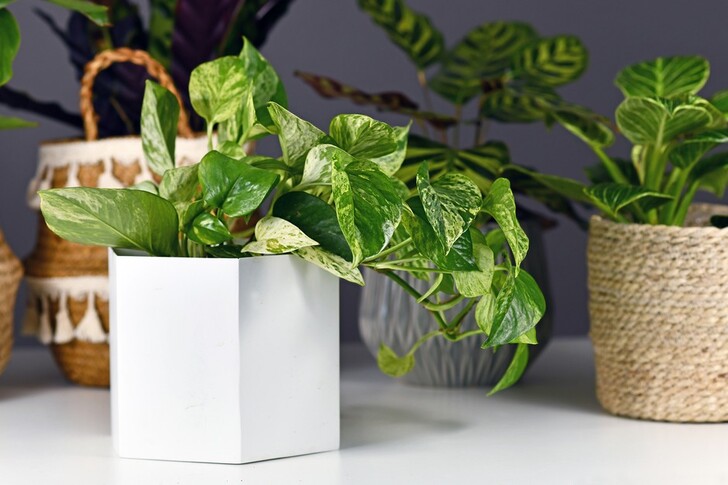
Pothos, otherwise called Villain's Ivy or Epipremnum aureum, is a flexible and simple to-develop houseplant that is cherished for its following plants and lively green leaves. The heart-molded leaves frequently have yellow or white variegation, adding visual interest to any space. Pothos can flourish in different light circumstances, from low to splendid aberrant light, and is very lenient with regards to watering, pursuing it a magnificent decision for those new to establish care. This plant is additionally powerful at filtering the air, eliminating toxins like formaldehyde, benzene, and carbon monoxide. Pothos is unbelievably adaptable in its presentation choices; it very well may be filled in hanging containers, permitted to trail from racks, or prepared to move up lattices and walls. Its quick development rate and versatility make it a #1 for both home and office settings. With insignificant exertion, Pothos can add a rich, tropical feel to any indoor space.
Do you agree?
2
"Bug Plant (Chlorophytum comosum)"
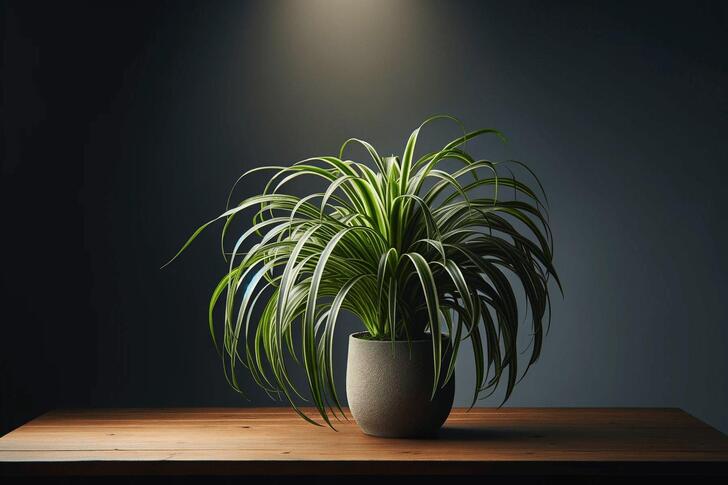
The Bug Plant, or Chlorophytum comosum, is an exemplary houseplant known for its flowing, curving leaves and simplicity of care. Its green and white striped leaves are alluring as well as assist with filtering the air by eliminating poisons like formaldehyde and xylene. Bug Plants flourish in brilliant, circuitous light yet can likewise endure lower light circumstances, making them adaptable for different indoor settings. They favor well-depleting soil and normal watering, however they are excusing if sometimes ignored. One of the most enchanting parts of the Bug Plant is its capacity to create spiderettes or child plants on lengthy stems, which can be effortlessly spread into new plants. This goes with them an incredible decision for plant fans who appreciate sharing or extending their plant assortment. Bug Plants are in many cases shown in hanging containers or on racks, where their following foliage can be exhibited. Their low upkeep and air-refining characteristics make them a number one for the two homes and workplaces.
Do you agree?
3
"ZZ Plant (Zamioculcas zamiifolia)"

The ZZ Plant, or Zamioculcas zamiifolia, is a vigorous and appealing houseplant known for its reflexive, dull green passes on and capacity to flourish in low-light circumstances. This plant is practically indestructible, making it ideal for fledgling landscapers or the people who travel every now and again. The ZZ Plant can endure disregard, requiring just periodic watering and flourishing in backhanded light, however it can likewise deal with low light levels. Its waxy leaves are outwardly engaging as well as assist it with holding water, making it dry season lenient. Like the Snake Plant, the ZZ Plant is known for its air-cleaning properties, eliminating poisons like xylene, toluene, and benzene from the air. The ZZ Plant's building structure and gleaming foliage add a bit of tastefulness to any room, whether it's put in a jazzy pot on a work area or as an explanation piece in a parlor. Its flexibility and insignificant consideration prerequisites pursue it a famous decision for both home and office conditions.
Do you agree?
4
"Elastic Plant (Ficus elastica)"
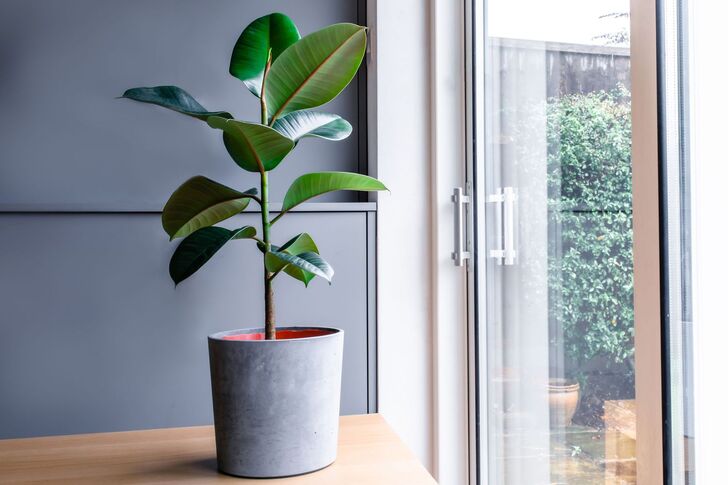
The Elastic Plant, or Ficus elastica, is a famous houseplant known for its huge, gleaming leaves and vigorous development. This plant can become very tall inside, pursuing it a great decision for adding level and show to a room. The Elastic Plant favors brilliant, backhanded light yet can likewise adjust to bring down light circumstances, however its development might slow. It flourishes in well-emptying soil and advantages out of ordinary watering, permitting the dirt to dry out somewhat between waterings. The Elastic Plant's striking foliage goes from dull green to burgundy, contingent upon the assortment, and its glossy passes on add a hint of class to any indoor space. Notwithstanding its tasteful allure, the Elastic Plant is likewise known for its air-purging properties, assisting with eliminating contaminations like formaldehyde from the air. Its mix of magnificence, size, and air-cleaning capacities makes it a #1 for both home and office conditions, where it can offer an intense expression while further developing indoor air quality.
Do you agree?
5
"Harmony Lily (Spathiphyllum)"
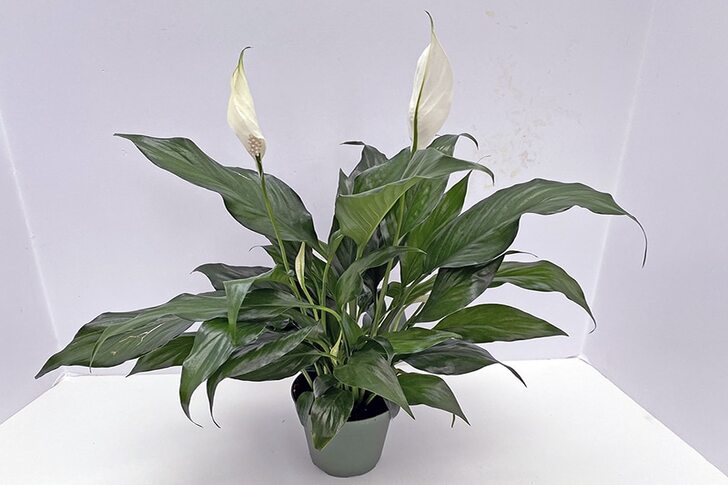
The Harmony Lily, or Spathiphyllum, is a famous houseplant known for its striking white blossoms and rich, dim green leaves. This rich plant isn't just lovely yet in addition one of the top air-cleaning plants, successfully eliminating poisons like alkali, formaldehyde, benzene, and trichloroethylene from the air. Harmony Lilies flourish in low to medium light circumstances, making them ideal for workplaces and indoor spaces with restricted normal light. They like to be kept in reliably soggy soil yet can endure periodic drying out. One of the champion highlights of the Harmony Lily is its capacity to blossom inside, creating white spathes that look like calla lilies. These blossoms can keep going for a considerable length of time, adding a dash of tastefulness to any room. Harmony Lilies are additionally known to increment dampness, which can be gainful for dry indoor conditions. Their blend of tasteful allure and air-filtering capacities settles on them a well known decision for improving indoor spaces.
Do you agree?
6
"Snake Plant (Sansevieria trifasciata)"
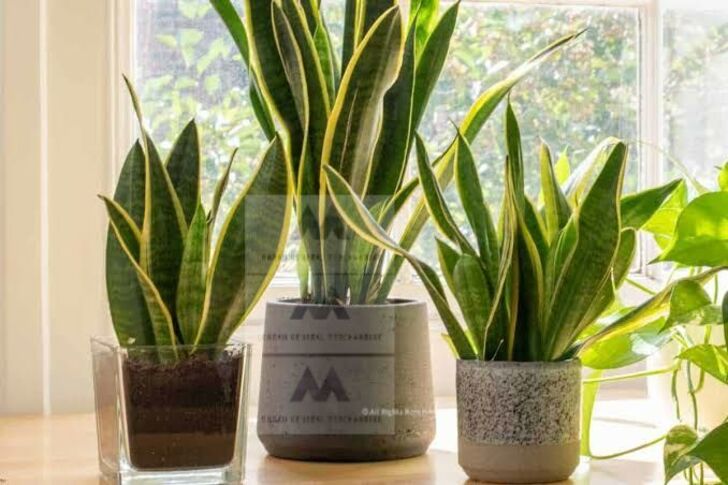
The Snake Plant, otherwise called Sansevieria or Mother by marriage's Tongue, is one of the most famous indoor plants because of its striking appearance and low upkeep prerequisites. This tough plant is portrayed by its tall, upstanding, sword formed leaves with green and yellow variegation. The Snake Plant is a superb decision for novices or those with occupied ways of life since it can flourish in different light circumstances, from low to splendid backhanded light, and requires rare watering. One of the champion elements of the Snake Plant is its capacity to filter the air by eliminating poisons like formaldehyde, benzene, and trichloroethylene. Furthermore, it is known to deliver oxygen around evening time, making it an optimal plant for rooms to further develop air quality during rest. The Snake Plant's smooth and current look supplements different inside styles, from moderate to bohemian. Its versatility and air-purging characteristics make it a number one for homes and workplaces the same.
Do you agree?
LATEST POSTS
Share this article
 Figure out How to Track and Anticipate Future Cd Rates
Figure out How to Track and Anticipate Future Cd Rates 6 Pet Sitting Administrations for Your Dearest Pets
6 Pet Sitting Administrations for Your Dearest Pets Make Your Fantasy Closet: 10 Immortal Design Fundamentals
Make Your Fantasy Closet: 10 Immortal Design Fundamentals Vote in favor of Your #1 BWM Vehicles
Vote in favor of Your #1 BWM Vehicles 6 Top Computer game Control center
6 Top Computer game Control center Dominating Online Entertainment Showcasing: 7 Hints for Organizations
Dominating Online Entertainment Showcasing: 7 Hints for Organizations Dependable Savvy Locks to Update Your Home Security
Dependable Savvy Locks to Update Your Home Security Which Kind of Pet Makes the Incomparable Buddy?
Which Kind of Pet Makes the Incomparable Buddy? 7 Peculiar Ways Of starting Your Imagination: Motivation Has Never Been This Good times
7 Peculiar Ways Of starting Your Imagination: Motivation Has Never Been This Good times













